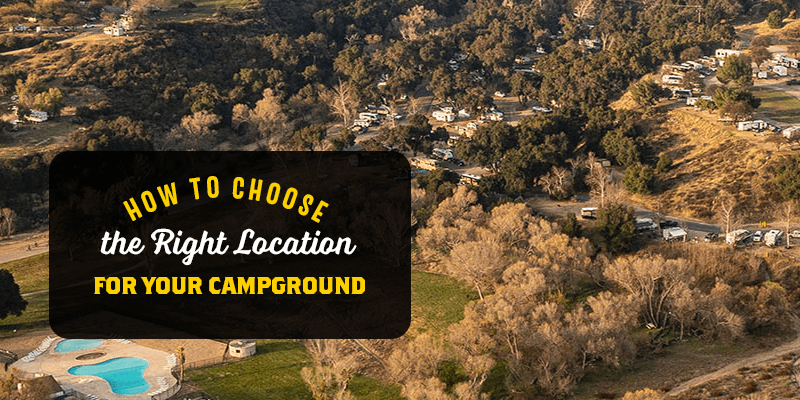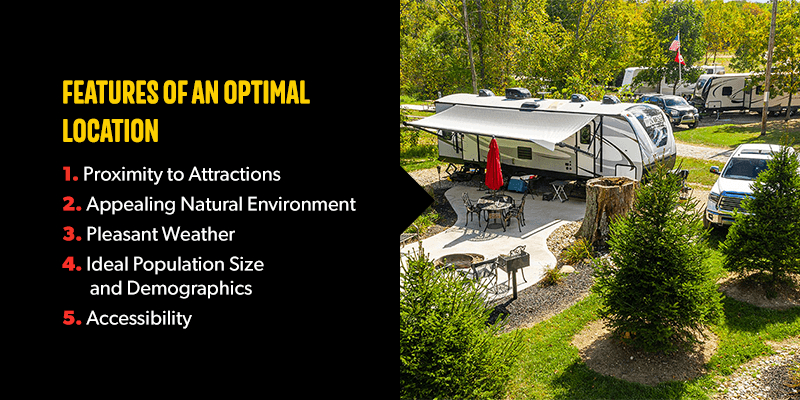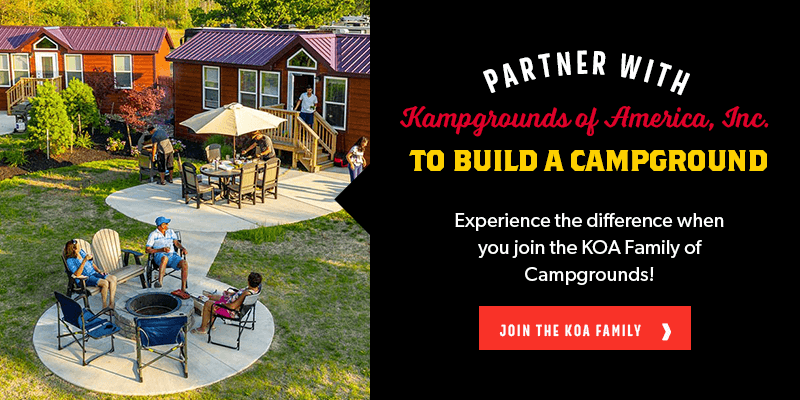
Campgrounds allow visitors to break away from the hustle and bustle of everyday life and connect with nature. Evaluating the optimal location for a campground requires looking at various factors, including proximity to attractions and accessibility. You will also need to consider zoning laws and real estate taxes. Read on to learn how to choose the right location for your campground and make the most of this new venture!
Features of an Optimal Location
The ideal campground location allows for outdoor activities like fishing, hiking or watersports — which is why many campground locations are close to a lake or another body of water. Beyond that, a location close to amenities or major highways can increase convenience for campers looking for a weekend getaway. More factors you will want to consider include accessibility and typical climate. Here is what to consider when deciding on a location to build a campground.

1. Proximity to Attractions
Attractions can put one potential campground location above the rest. Captivating features like scenic trails, lakes and unique landmarks drive camper interest, drawing in nature enthusiasts and families looking for memorable experiences. Situating your campground near local attractions gives campers plenty to do during their stay. This can encourage positive reviews and repeat business to amplify your campground’s reputation. Choosing a location with exciting attractions nearby is an excellent way to elevate your campground from a standard site to an unforgettable destination.
2. Appealing Natural Environment
As you explore potential campgrounds, survey the terrain, vegetation and potential hazards. The landscape should be level enough to set up tents, drive RVs and engage in recreational activities. Local plant life should provide shade in some places and allow for sun exposure in others. It should also provide a beautiful backdrop for fishing, hiking or simply relaxing. Even dirt composition is important — it determines the site’s stability, drainage efficiency and ease of construction as you build infrastructure.
You will also want to remember that the outdoors belongs to animals first. While campers might take joy in spotting wildlife like birds and deer, the presence of bears might be less welcome. If you choose a campground where many animals are present, you will need to take additional safety measures and respect the animals.
3. Pleasant Weather
Many campgrounds remain open year-round to cater to campers looking for a summer vacation, as well as those who want to escape during the winter. A location that is sunny and bright during the spring and summer and delightfully crisp during the fall and winter might be the ideal place to set up a campground. Every camper has different preferences, so a location with varied weather can help your campground appeal to a wider demographic.
One weather element you may want to avoid, if possible, is rain. Rain sustains lush greenery, enhancing aesthetic allure, but excessive rainfall can discourage camping in the area. You may also want to take note of wind patterns. Gentle breezes enhance relaxation, but strong winds can quickly disrupt camping routines. Additionally, if the campground sits near large bodies of water, there may be risks of flooding and storms, so installing proper drainage infrastructure and seeking out adequate elevation sites for campers is a must.
4. Ideal Population Size and Demographics
You can also look at the area’s population before making a decision. Is the area completely remote? Is there a town nearby? How close is the nearest city? A campground location near a town or city might attract more visitors, but a campground in a more remote location could appeal to people looking to go “off the grid” for a while.
Demographic data like age and interests can also help you pick a campground location. Does your target demographic prefer outdoor sports like volleyball or nature-based activities like hiking? Are there parents looking for a place to take kids or young adventure-seekers searching for a weekend getaway with friends? The great thing about camping is you can likely appeal to all of these groups — and more — but considering the nearby population size and demographics can help you choose a location that accommodates their interests.
5. Accessibility
A locale with easy-to-find entrances, exits, and access to major roadways offers campers an additional level of convenience and ensures a campground is accessible.
You will also want to find a location that can accommodate all camper abilities. Look for a terrain that creates a welcoming environment for all and offers many opportunities to create walkways and campsites for campers with disabilities or mobility needs. Maintaining these amenities helps the campground remain safe and welcoming for all individuals.
Compliance and Financial Considerations
Captivating landscapes offer amazing opportunities when looking at where to build a campground visitors will love, but taking a proactive stance on taxation and regulations is also important. Here are some additional campground considerations.
1. Real Estate Taxes
As you search for a campground location, you should scrutinize tax rates and insurance premiums, noting their role in your campsite’s long-term profitability. Low tax zones, often in scenic locations, curb operational costs and bolster your investment prospects. Saving on real estate taxes can open up the opportunity to invest more in your campground’s infrastructure while optimizing profits. You can research similar properties nearby to determine whether the land you are looking at is proportionally priced.
2. Regulatory Compliance
Familiarize yourself with local regulations and permits, as well as local sustainability efforts. Building in a location where environmental zoning laws are in place showcases responsible stewardship, creating a positive reputation with local authorities and potential visitors.
You will also want to remain compliant with safety and accessibility guidelines. Compliance with safety regulations assures patrons that you offer a secure environment. Embracing accessibility standards ensures inclusivity, allowing you to cater to a broader demographic.
Waste management and sanitary guidelines are also important to consider. Adhering to waste management and sanitation codes demonstrates your commitment to hygiene, which increases trust with campers.
Whether building a rustic campsite or an RV park, check with the local government to ensure you complete the correct paperwork for a seamless building process. Strategically bypass areas with complex permitting processes to reduce delays and unnecessary expenses so you can complete your camp-building project efficiently.
Interested in Building a Campground?
Considering an area’s geographical advantages, accessibility and proximity to local attractions helps ensure outdoor enthusiasts have an exceptional experience at your campground.
Partner with Kampgrounds of America, Inc. to build a campground trusted by campers in the United States and Canada. KOA has amenities that make the camping experience seamless and best-in-class. Becoming a KOA means owning a high-value campground and enjoying support from an established and trusted brand. Experience the difference when you join the KOA Family of Campgrounds!
